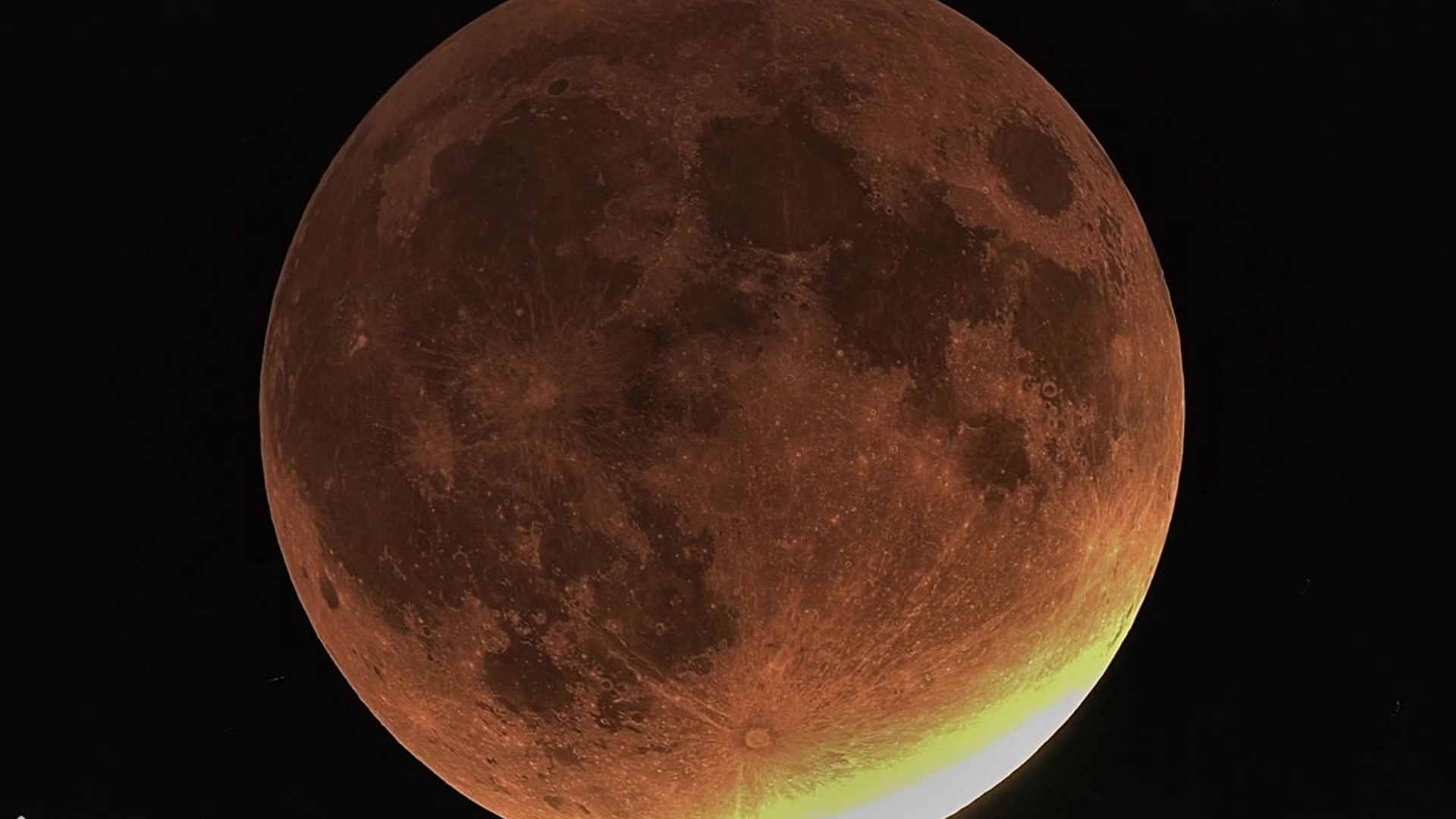PENNSYLVANIA, USA — This month's full moon is coming up this Sunday into Monday. If you look up to it late Sunday night, you will notice it looks different from other full moons.
"A total lunar eclipse only ever happens – or any kind of lunar eclipse – only happens at a full moon phase because that's when the moon is opposite the sun from the point of view of the earth," explained Matt Beaky, a physics professor at Juniata College.
We chatted online about how this month's full moon will be totally eclipsed.
"The total lunar eclipse, that is when the moon passes through the deepest darkest part of the earth's shadow."
The earth's shadow is broken up into two parts – the penumbra and the umbra.
"Penumbra is a shadow region, but it's fairly illuminated with sunlight."
The umbra is the darkest part of the earth's shadow, and Pennsylvania will be going through the middle of it Sunday night, making this one of the longer possible lunar eclipses.
"This eclipse is what they call a central eclipse, meaning the moon does pass through the center of the earth's shadow or close to it. So that's what gives it the longer duration – 84 minutes is very much on the longer side. Maybe not the longest possible but close to that," Beaky said.
The maximum eclipse is happening around midnight, which means we'll get to see the eclipse from start to finish. Here's what you can expect to see.
"If you're watching around 10:25, 10:30, or so, you should see a little bite out of the moon start to appear," Beaky said. "About halfway through totality, something like 12:15 is when it's at the deepest part of the shadow. That's when it should look the most darkened and the most reddish."
The reddish color is caused by the earth's atmosphere scattering out the blue light but allowing red light to pass through.
"That's the same reason we see red sunsets and red sunrises."
The best part about the lunar eclipse?
"The glory of the lunar eclipse is that it's available to everybody with no special equipment, no special techniques. Step outside, take a lookup in the sky, and you'll see the moon eclipse."
All we need is a clear sky.
See past Skywatch 16 segments on YouTube:

